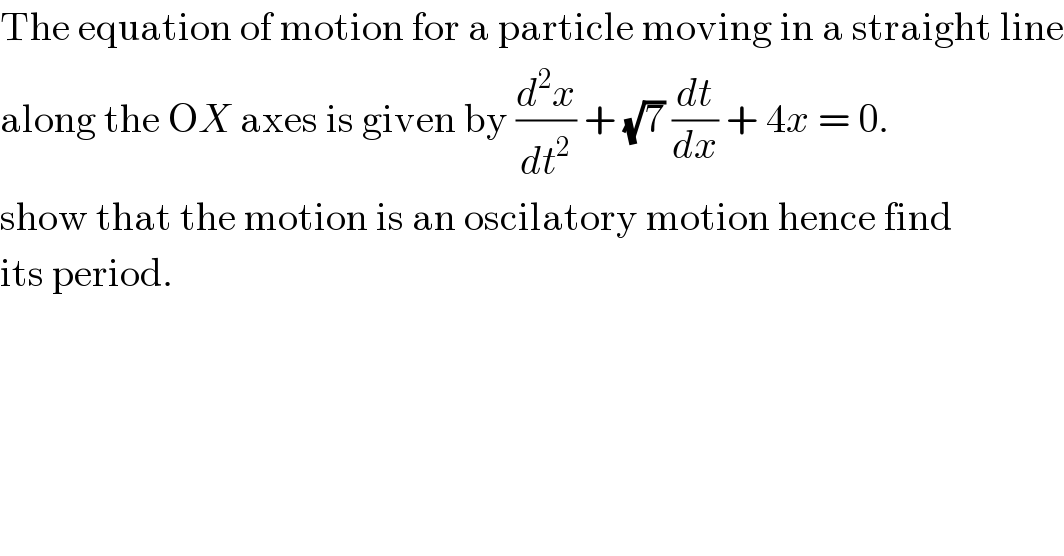
Question and Answers Forum
Previous in Differential Equation Next in Differential Equation
Question Number 95679 by Rio Michael last updated on 26/May/20

Commented by Tony Lin last updated on 27/May/20
![λ^2 +(√7)λ+4=0 λ=((−(√7)±3i)/2) x=e^(−((√7)/2)t) (c_1 cos(3/2)t+c_2 sin(3/2)t) =e^(−((√7)/2)t) (√(c_1 ^2 +c_2 ^2 ))((c_1 /(√(c_1 ^2 +c_2 ^2 )))cos(3/2)t+(c_2 /(√(c_1 ^2 +c_2 ^2 )))sin(3/2)t) let (c_1 /(√(c_1 ^2 +c_2 ^2 )))=sinθ θ=sin^(−1) (c_1 /(√(c_1 ^2 +c_2 ^2 ))) ⇒x=e^(−((√7)/2)t) (√(c_1 ^2 +c_2 ^2 ))[sin((3/2)t+θ)] (dx/dt)=−((√7)/2)e^(−((√7)/2)t ) (√(c_1 ^2 +c_2 ^2 ))(3/2)[cos((3/2)t+θ)] (d^2 x/dt^2 )=−(7/4)e^(−((√7)/2)t) (√(c_1 ^2 +c_2 ^2 ))(9/4)[sin((3/2)t+θ)] =−((63)/(16))x F=−((63m)/(16))x →oscillatory motion period T=((2π)/ω)=((2π)/(3/2))=(4/3)π but when t→∞, e^(−((√7)/2)t) →0 so the amplitude would decrease gradually](Q95713.png)
Commented by Rio Michael last updated on 27/May/20

